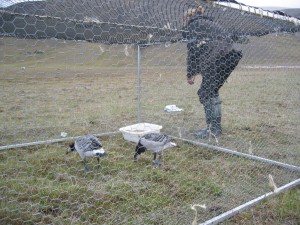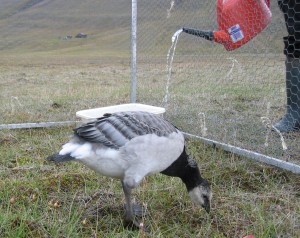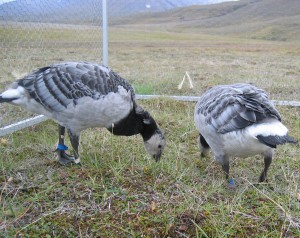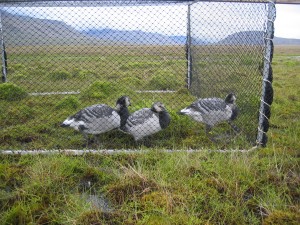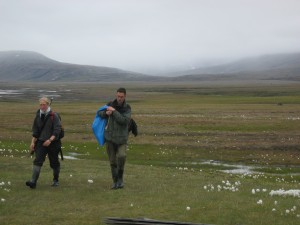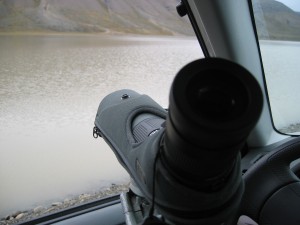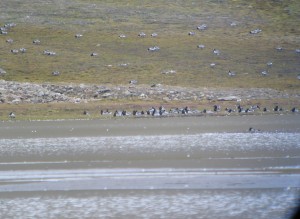|
Photo impressions of field work on the FRAGILE project |
A personal photo report from
Maarten Loonen |
On Spitsbergen, we are studying combined effects of goose grazing and global warming on an arctic tundra. The project
is called FRAGILE and is financed by the
European Community. At the beginning of the season,
Maarten Loonen visited the field site and made the following report.
| Index to this page: | [morning walk] | [goslings] | [vegetation plots] | [measuring bacterial communities] | [migration] |
 | |||||
The morning walk to the siteEvery morning at 9 o'clock, there is a meeting at UNIS, discussing the progress of the research. After the meeting, a party departs for the field site. First they drive 10 kilometers into the valley. When the road ends, they continue by foot. Thirty minutes walking. |
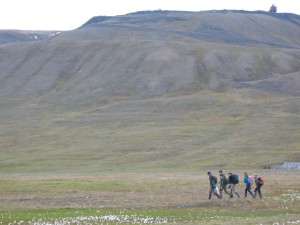 |
VegetationThe next six pictures are an example of the various treatments on the wet vegetion. There are 3 levels of grazing and two levels of temperature per block. The pictures are taken on 9 August 2004, after two grazing treatments. |
|||
| Ungrazed | Normal grazing pressure | Heavy grazing pressure | |
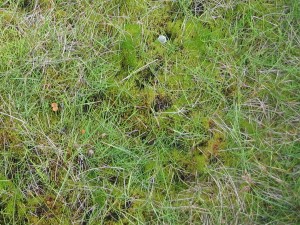 |
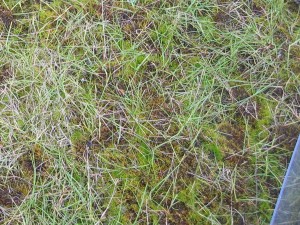 |
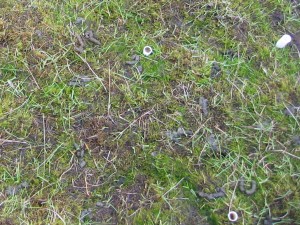 |
Enhanced temperature By placing open top chambers (OTC) on the vegetation, the temperature is enhanced a few degrees, simulating global warming. |
| UT | LT | HT | |
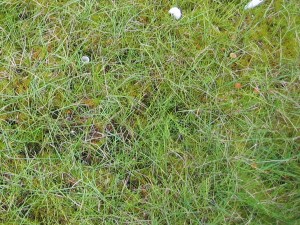 |
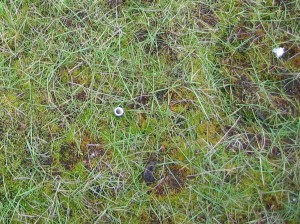 |
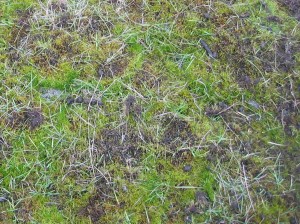 |
Ambient temperature These plots are exposed to normal weatherconditions |
| UA | LA | HA | |
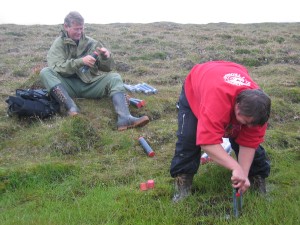 |
Bacterial communitiesAnne Grethe Hestnes, a PhD-student from Troms° has learned about the methane production which has been measured at our site. She wants to sample vegetation and soil to analyse the methane-consuming bacterial community. Already some spin-off from the FRAGILE project into the scientific community.Bjorn Solheim assists her with taking cores. |
| NEXT | next report |
| PREVIOUS | previous report on FRAGILE fieldwork: 2 August 2004 |
| INDEX | index to all reports on FRAGILE fieldwork |
| New website with all years: | http://www.arcticstation.nl |
| Fieldwork in this period in Ny-┼lesund: | http://www.maartenloonen.nl/nyaal |
| Personal webpage Maarten Loonen, index to all his pages: | http://www.maartenloonen.nl |
| Official webpage of the Arctic Centre, Groningen (NL): | http://www.arctic-centre.nl |
